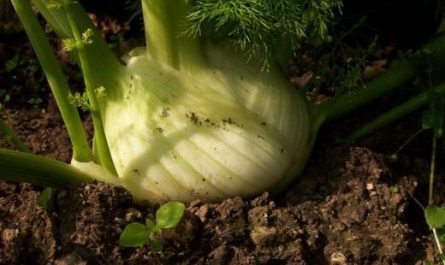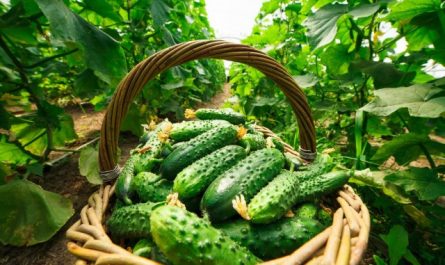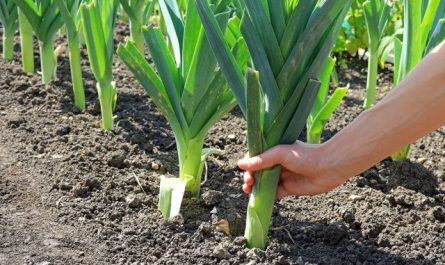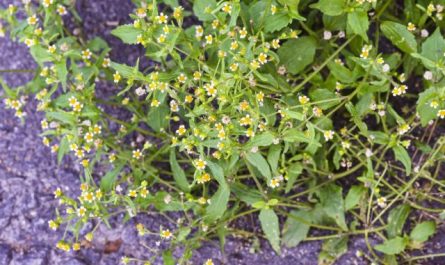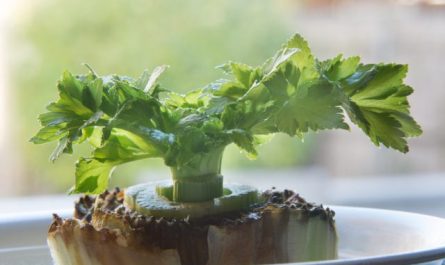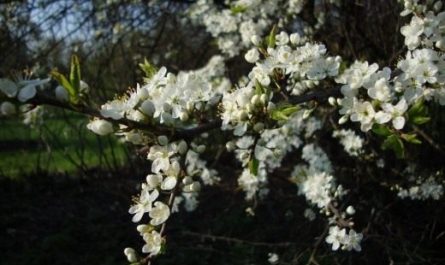Protecting plants from various diseases takes up the lion’s share of summer residents’ time in the summer. And this fight does not always end with a positive result for the plants. One of the most harmful diseases affecting gooseberries is American powdery mildew, or gooseberry spheroteca. In this article, we will tell you whether it is possible to prevent the disease, and what to do if powdery mildew on gooseberries does appear.

Distinctive features of powdery mildew
The first signs of gooseberry bushes being affected by spheroteca coincide with the beginning of bud break. On the upper side of the young leaf blade and on the tops of the shoots, a web-like white coating appears, which gradually grows, thickens and takes on a felt-like appearance, dotted with black dots. This is mycelium with spores.
As it grows, it moves to the entire above-ground part of the plant. The mycelium releases viable spores that fly away under the influence of wind and raindrops. It is this first infection that is the most harmful, it affects the leaves and young shoots, ovaries.
If nothing is done, the diseased plant stops developing, the berries fall off while still growing and ripening, the shoots become twisted, the bush gradually takes on the appearance of being sprayed with lime solution and dies. At the same time, ideal conditions are created on the site for further infection with spheroteca not only of gooseberries, but also of other fruit-bearing bushes.

Why does powdery mildew occur every year?
During the growing season, conidia (spores) separate from the mycelium. Very small and light (dust-like), they are easily carried by the wind over considerable distances and affect healthy gooseberry bushes and other berry bushes (white, black, pink currants, etc.).
Throughout the warm period, shoots, branches, and bushes are re-infected. At first, the plants seem absolutely healthy, and the spores survive the winter and give rise to a new outbreak of infection the following spring.
The main condition for the rapid development of spheroteka and the defeat of new bushes is the alternation of high humidity (not lower than 60-80%) and dry hot weather (+25…+30°C). If such changes occur during the growth phase of young leaves, the mycelium begins to develop intensively with the formation of conidia.
The incubation period of their development, depending on the temperature, fluctuates within 5-7 days. If it starts raining during this period, the spread of the disease practically does not occur. Conidia remain on the mycelium. But with the cessation of rains, the establishment of warm comfortable weather with optimal air humidity from soil evaporation, the pathogen begins to develop intensively. Literally in 2-3 days, the bushes are captured by spheroteca (covered with a white coating of mycelium).
With such a combination of weather conditions and rapid infection of new bushes with spheroteca, you should never feed the plants with nitrogen. The increased growth of young leaves from nitrogen feeding will ensure rapid growth of the pathogen.
Gooseberry varieties resistant to powdery mildew
The main prevention against spheroteka and other diseases is the selection of varieties that are resistant to this type of disease and adapted to the conditions of the region or even district.
Today, breeders offer the following gooseberry varieties that are resistant to powdery mildew: “Kooperator”, “Orlyonok”, “Consul”, “Malachite”, “Cherny Negus”, “Mashenka”, “Yubileiny”, “Finnish”, “Grushenka”, etc.
In recent years, thornless varieties resistant to fungal diseases have been in high demand among gardeners: “Kolobok”, “Ural grapes”, “Harlequin”, “Kuibyshevsky”, etc.

Prevention of powdery mildew on gooseberries
Simple agricultural practices will help minimize the chances of powdery mildew on gooseberries next season:
- When cleaning up a berry bush area in the fall, be sure to remove fallen leaves and burn them;
- Prune bushes and shoots of affected plants annually and destroy them;
- Always work with disinfected tools;
- During the growing season, keep the area free of weeds, as some of them are prone to fungal diseases and therefore participate in the spread of the disease;
- Plant new gooseberry bushes taking into account their resistance to powdery mildew;
- Do not allow the bushes to become too dense when planting. There should be normal air circulation between the bushes;
- Sprinkle watering should be done in the morning so that the bushes have time to dry out during the day. When watering normally (with a hose), water under the bush. In general, it is better to use drip irrigation;
- When fertilizing, especially in warm cloudy weather with high humidity, exclude nitrogen fertilizing. You can replace them with wood ash, phosphorus-potassium or complete complex fertilizer.
Treatment of gooseberries with copper sulfate or milk solution
Every year in early spring, before or after the leaves have blossomed, treat the bushes with a solution of copper sulfate.
Copper sulfate can be replaced by annual preventive treatment of gooseberry bushes (and other crops) with a solution of whey or a solution of milk with the addition of iodine. The dairy product has an antiseptic effect only with sufficient sunlight. Therefore, abundant two-sided spraying (until the liquid drains from the leaves) is carried out at 10-11 am, necessarily in sunny weather after 1,5-2 weeks.
The solution is prepared in the following proportions: 1-2 liters of water (no more) and 3-5 drops of iodine are added to 7 liter of whey/milk. The solution does not work at a lower concentration.
Processing gooseberry bushes with ash infusion
Some gardeners carry out prevention of spheroteka on gooseberries by treating the bushes with an ash solution – in the phase of leaf blossoming (before flowering). Around the end of May – beginning of June, suppression of the disease is combined with foliar feeding with microelements contained in the ash.
The solution is prepared as follows: pure wood ash is diluted with water in the proportion of 1 kg of ash per 10 l of water. Infuse for 3-5 days (you can boil it for 0,5 hours and cool it), stirring 1-2 times a day.
Add several spoons of grated soap to the solution. Mix the solution thoroughly until the soap dissolves. Strain through several layers of fabric to prevent the sprayer from clogging during spraying. Spray three times with a 24-hour interval.

Control of powdery mildew on gooseberries
Protective measures against gooseberry damage by spheroteka can be carried out using chemical, biological and folk remedies.
Use of chemicals
Gooseberries form a harvest in a very short time. The waiting period when treating bushes with pesticides lasts up to 30 days or more. Therefore, it is not recommended to use pesticides to combat powdery mildew on gooseberries.
Use of biochemical preparations
The safest method of combating this disease is use of biofungicidesThese are biological preparations that do not have a negative impact on the health of people, animals and birds and, when used correctly, provide a good yield of high-quality berries.
The most popular biofungicides that protect gooseberries from spheroteka are Fitosporin-M (there is no waiting period, the berries can be eaten the next day after the bush has been treated, but they must be washed in clean water before use).
Good results are achieved by treatment with the preparations “Planriz”, “Gamair”, “Trichodermin”, “Pseudobacterin-2”. All biological preparations must be prepared and used for treating bushes according to the recommendations.
Folk methods of protecting gooseberries from powdery mildew
Infusion of fresh manure kills pathogenic microflora. Preparation of the solution: 1 kg of fresh manure is poured into 10 liters of water. Infused for 7 hours. Filter and treat the bushes every 10- days until the signs of the disease disappear.
Mixed aspirin and soda solution. Mix 1 tablespoon of soda + 1 aspirin tablet + 1 teaspoon of liquid soap + 1 tablespoon of any vegetable oil with 5 liters of water. Treat gooseberry bushes with the freshly prepared solution every 12 days throughout the growing season.
They noticeably depress the spheroteka decoctions of dry onion peel in the ratio of 200 g per 10 l of boiling water. Infuse for 2 days. Spray before and after flowering, as well as after harvesting.
It disinfects soil well from spheroteca spores. dry tansy. Pour 30 liters of boiling water over 10 g of dry grass with flowers. Leave to infuse for 2 hours. After infusing, boil for hours, cool, and strain. Treat the soil under the bushes with the resulting decoction in the spring before the leaves bloom and in the fall before the onset of cold weather.





